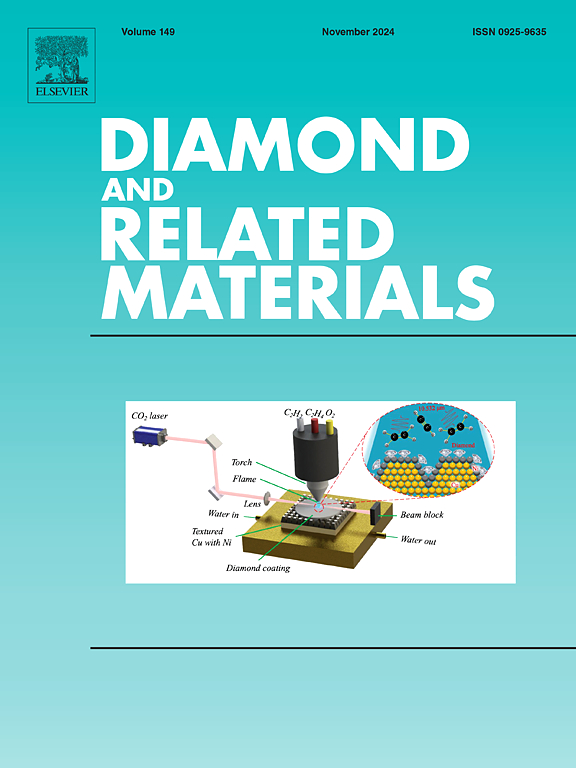Single-step hydrothermal synthesis of Plantago major-based carbon dots: therapeutic and antimicrobial properties
IF 4.3
3区 材料科学
Q2 MATERIALS SCIENCE, COATINGS & FILMS
引用次数: 0
Abstract
In this study, Plantago major carbon dots were synthesized in a single step by hydrothermal synthesis method. Carbon dot synthesis using Plantago major precursor was performed for the first time and the synthesized carbon dots were not subjected to any modification. UV–Visible (UV–Vis) Spectroscopy, High-resolution Transmission Electron Microscopy (HR-TEM), Fourier Transform Infrared Spectroscopy (FTIR), fluorescence spectroscopy, and X-ray diffraction (XRD) analyses were performed to characterize carbon dots. The antioxidant, antibacterial, anticancer, and wound-healing activities of carbon dots subjected to different purification processes (filtration, dialysis) were compared. Antioxidant activity of the carbon dots was evaluated by the 2,2-diphenyl-1-picrylhydrazyl (DPPH) method, antibacterial activity against Escherichia coli (E coli) and Staphylococcus aureus (S. aureus) by disk diffusion method, and wound healing effect via in vitro scratch assay test. The anticancer activity of carbon dots against MCF-7 cells was evaluated. The filtered carbon dots exhibited antibacterial activity against S. aureus. In contrast, dialyzed carbon dots did not exhibit antibacterial activity against both S. aureus and E. coli. Filtered carbon dots exhibited excellent anticancer properties, while dialyzed carbon dots also exhibited an accelerating effect on wound healing. Purification methods of carbon dots affect the effectiveness of carbon dots. Carbon dots obtained from Plantago major are promising in the pharmaceutical sector with their wound-healing effect and anticancer properties in biomedical applications.

单步水热合成车前草基碳点:治疗和抗菌性能
本研究采用水热法一步合成车前草主碳点。首次采用车前草为主前驱体合成了碳点,并且所合成的碳点没有经过任何修饰。采用紫外可见光谱(UV-Vis)、高分辨率透射电子显微镜(HR-TEM)、傅里叶变换红外光谱(FTIR)、荧光光谱和x射线衍射(XRD)分析对碳点进行了表征。比较了不同纯化工艺(过滤、透析)下碳点的抗氧化、抗菌、抗癌和创面愈合活性。采用2,2-二苯基-1-吡啶酰肼(DPPH)法测定碳点的抗氧化活性,采用圆盘扩散法测定碳点对大肠杆菌(E coli)和金黄色葡萄球菌(S. aureus)的抑菌活性,采用体外划痕试验测定碳点的伤口愈合效果。研究了碳点对MCF-7细胞的抗癌作用。过滤后的碳点对金黄色葡萄球菌具有抗菌活性。相比之下,透析碳点对金黄色葡萄球菌和大肠杆菌均没有抗菌活性。过滤后的碳点具有良好的抗癌性能,而透析后的碳点也具有促进伤口愈合的作用。碳点的净化方法影响碳点的效果。从车前草中提取的碳点具有创面愈合和抗癌等生物医学应用价值,在医药领域具有广阔的应用前景。
本文章由计算机程序翻译,如有差异,请以英文原文为准。
求助全文
约1分钟内获得全文
求助全文
来源期刊

Diamond and Related Materials
工程技术-材料科学:综合
CiteScore
6.00
自引率
14.60%
发文量
702
审稿时长
2.1 months
期刊介绍:
DRM is a leading international journal that publishes new fundamental and applied research on all forms of diamond, the integration of diamond with other advanced materials and development of technologies exploiting diamond. The synthesis, characterization and processing of single crystal diamond, polycrystalline films, nanodiamond powders and heterostructures with other advanced materials are encouraged topics for technical and review articles. In addition to diamond, the journal publishes manuscripts on the synthesis, characterization and application of other related materials including diamond-like carbons, carbon nanotubes, graphene, and boron and carbon nitrides. Articles are sought on the chemical functionalization of diamond and related materials as well as their use in electrochemistry, energy storage and conversion, chemical and biological sensing, imaging, thermal management, photonic and quantum applications, electron emission and electronic devices.
The International Conference on Diamond and Carbon Materials has evolved into the largest and most well attended forum in the field of diamond, providing a forum to showcase the latest results in the science and technology of diamond and other carbon materials such as carbon nanotubes, graphene, and diamond-like carbon. Run annually in association with Diamond and Related Materials the conference provides junior and established researchers the opportunity to exchange the latest results ranging from fundamental physical and chemical concepts to applied research focusing on the next generation carbon-based devices.
 求助内容:
求助内容: 应助结果提醒方式:
应助结果提醒方式:


